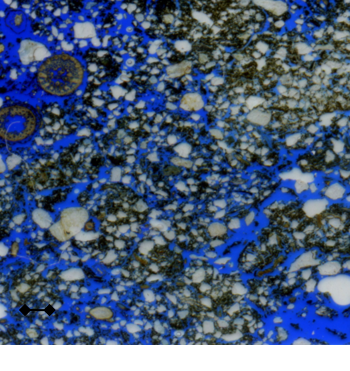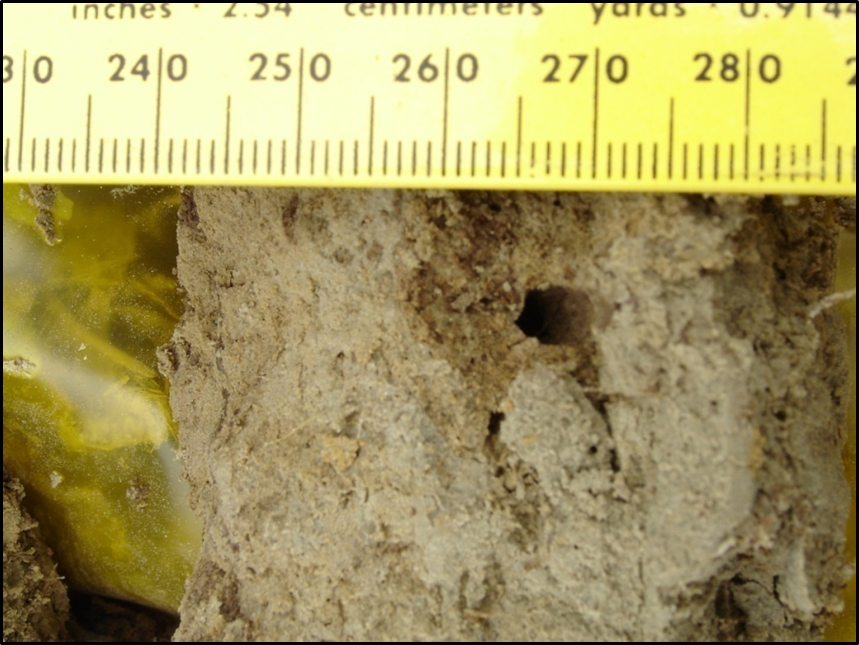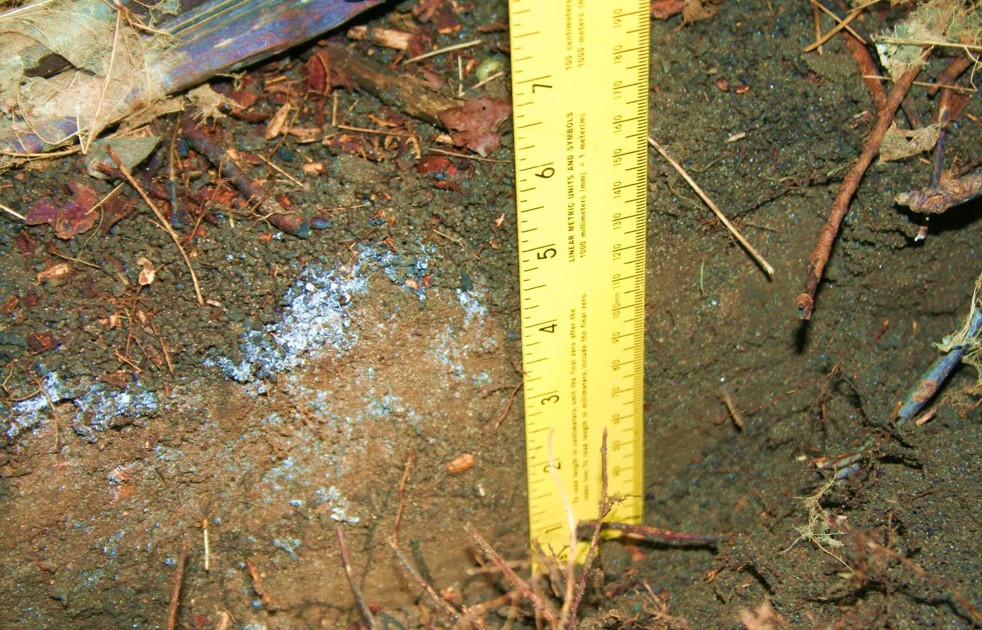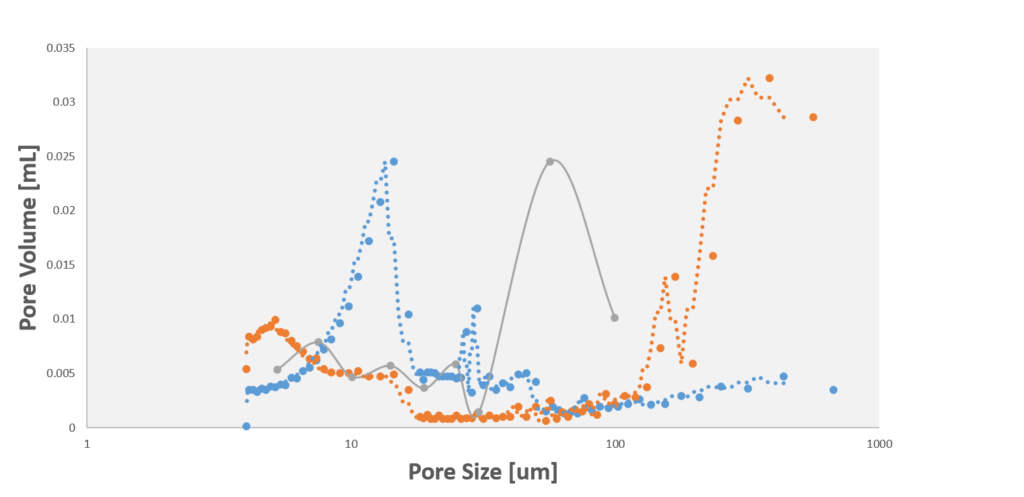
Biogeophysics is a companion field of study to biogeochemistry. It attempts to set habitable pore space in the context of soil ecology. What is the movement of matter through soil food webs given soil physical habitat, as delineated by soil water-filled and air-filled pore structure, and as affected by heat transmission through the soil.
Some seminal papers on habitable pore space that inspired me (abbreviated references):
Currie, J. A. “The volume and porosity of soil crumbs.” Journal of Soil Science 17.1 (1966): 24-35
Darbyshire, J. F. “Effect of water suctions on the growth in soil of the ciliate Colpoda steini, and the bacterium Azotobacter chroococcum.” Journal of Soil Science 27.3 (1976): 369-376.
Elliott, Edward T., et al. “Habitable pore space and microbial trophic interactions.” Oikos (1980): 327-335. available at JStore
Linn, Daniel Myron, and John W. Doran. “….water-filled pore space on carbon dioxide and nitrous oxide ….” Soil Science Society of America Journal 48.6 (1984): 1267-1272
Sexstone, A.J., Revsbech, N.P., Parkin, T.B. and Tiedje, J.M., 1985. … oxygen profiles and denitrification … soil aggregates 1. Soil science society of America journal, 49(3), pp.645-651
Anderson, J. M. “Spatiotemporal effects of invertebrates on soil processes.” Biology and fertility of soils 6.3 (1988): 216-227. http://citeseerx.ist.psu.edu/viewdoc/download?doi=10.1.1.552.5500&rep=rep1&type=pdf
Groffman, Peter M., and James M. Tiedje. “Denitrification hysteresis during wetting and drying cycles in soil.” Soil Science Society of America Journal 52.6 (1988): 1626-1629.
Darbyshire, J. F., et al. “Ciliate distribution amongst soil aggregates.” Revue d’Ecologie et de Biologie du Sol (France) (1989).
Drury, C. F., R. P. Voroney, and E. G. Beauchamp. “Availability of NH4+-N to microorganisms and the soil internal N cycle.” Soil Biology and Biochemistry 23.2 (1991): 165-169
Wardle D A and Yeates G W 1993 The dual importance of competition and predation as regulatory forces in terrestrial ecosystems: … Oecologia 93, 303–306.
Hassink, J., et al. “Relationships between habitable pore space, soil biota and mineralization rates in grassland soils.” Soil Biology and Biochemistry 25.1 (1993): 47-55.
Griffiths, B. S. “Microbial-feeding nematodes and protozoa in soil: …. microbial activity … decomposition hotspots and the rhizosphere.” Plant and Soil 164.1 (1994): 25-33.
Hattori, R., and T. Hattori. “Soil aggregates as microcosms of bacteria–protozoa biota.” Soil Structure/Soil Biota Interrelationships. Elsevier, 1993. 493-501.
Young I M, Roberts A, Griffiths B S and Caul S 1994 Growth of aciliate protozoan in model Ballotini systems of different particlesizes. Soil Biol. Biochem. 26, 1173–1178.
Quénéhervé P, Chotte J-L. Distribution of nematodes in vertisol aggregates under a permanent pasture in Martinique. Applied Soil Ecology. 1996;4:193–200.
Sano Z-I, Nakasono K. Influence of size of soil aggregates on the survival of Meloidogyne incognita juveniles. Soil Microorganisms. 1997;49:9–16.
Chenu, C., Hassink, J. and Bloem, J., 2001. Short-term changes in the spatial distribution of microorganisms in soil aggregates … Biol. and Fert. of Soils, 34(5), pp.349-356.
Yeates GW, Dando JL, Shepherd TG. Pressure plate studies-… how moisture affects access of … nematodes to food in soil. European Journal of Soil Science. 2002;53:355–365..

My own papers on this matter:
Görres, J.H., et al. “Grazing in a porous environment: 1. The effect of soil pore structure on C and N mineralization.” Plant and Soil 212 (1999): 75-83. available at Researchgate or at http://www.uvm.edu/~dneher/Publications/Gorres%20et%20al%20Grazing%201%201999.pdf
Görres, J.H., M. C. Savin, and J. A. Amador. “Soil micropore structure and carbon mineralization in burrows and casts of an anecic earthworm (Lumbricus terrestris).” Soil Biology and Biochemistry 33.14 (2001): 1881-1887. http://www.academia.edu/download/58728247/s0038-0717_2801_2900068-220190327-20857-j5ihvg.pdf
Savin, M. C., et al. “Biogeophysical factors influencing soil respiration and mineral nitrogen content in an old field soil.” Soil Biology and Biochemistry 33.4-5 (2001): 429-438. available at Academia.edu or at http://www.uvm.edu/~dneher/Publications/SBB2001.pdf
Gorres, J.H. and Amador, J.A., 2010. Partitioning of habitable pore space in earthworm burrows. Journal of Nematology, 42(1), p.68. 14. https://www.ncbi.nlm.nih.gov/pmc/articles/PMC3380515/

Görres, Josef H., et al. “Physical Properties of Soils Altered by Invasive Pheretimoid Earthworms: Does Their Casting Layer Create Thermal Refuges?.” Soil Systems 3.3 (2019): 52. https://www.mdpi.com/2571-8789/3/3/52

A recent presentation summarizing this work was presented at Annual Meeting of SSSA 2019 and available here:
